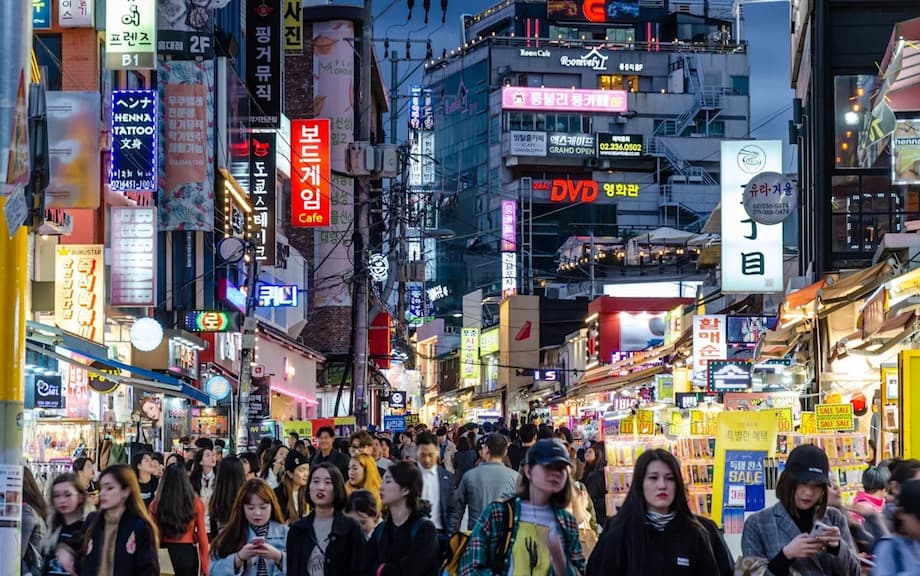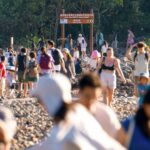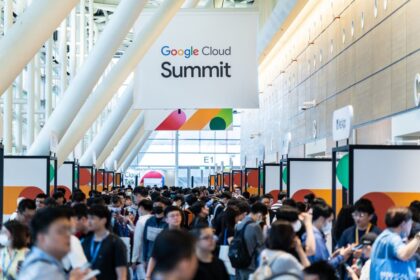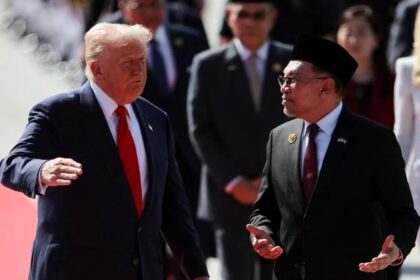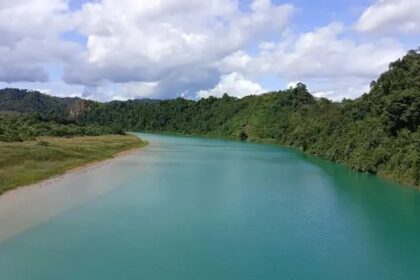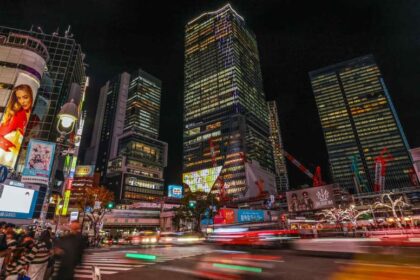A surge powered by stories, music and food
When London author Polly Faber stumbled onto the drama Crash Landing on You during the first lockdown, she did not expect it to change her holiday plans. Months later, after a streak of late night K drama binges and a growing playlist of K pop, she was studying basic Korean on her phone, joining fan communities and filling her kitchen with kimchi and spicy ramen. Two and a half years on, she booked a three week trip to South Korea, backpacked between filming locations, took food tours and discovered that the places and flavors she had seen on screen were even more vivid in person.
- A surge powered by stories, music and food
- How fans turn streaming into itineraries
- Beyond Seoul, a broader map of travel
- What officials are building to sustain growth
- Managing crowds and protecting neighborhoods
- Who is visiting and where the money goes
- Benefits and pressure points
- Travel basics that make Korea easy to navigate
- What to Know
Millions are making the same leap from screen to street. South Korea welcomed more than 16 million foreign visitors in 2024, up nearly half from the previous year, as the country’s cultural wave, known as Hallyu, fueled a new kind of tourism. Streaming hits, idol fandoms, K beauty and food culture are not just making Korea visible. They are converting viewers into travelers. In Seoul, a record 1.36 million foreign visitors arrived in July 2025 alone, according to city data, with strong demand from China, Japan, Taiwan and the United States. Many of these travelers are coming with a list shaped by dramas, songs, food videos and social media trends rather than by traditional package itineraries.
Tour operators who once sold bus circuits and shopping stops report a surge of interest in experiences that feel personal. Food tours, calligraphy classes, film and drama site trails, K pop dance sessions and behind the scenes studio visits now sit alongside day trips to palaces and markets. Even animated content has power. The Netflix hit KPop Demon Hunters has inspired themed experiences and helped put specific Seoul landmarks in front of global audiences. When a show or soundtrack captures attention, searches for flights and hotels spike. That loop from fandom to bookings is now an established pattern.
How fans turn streaming into itineraries
The typical Hallyu inspired trip strings together scenes, songs and snacks rather than only famous monuments. Some travelers start with a palace or a museum, then head straight to a drama location or the neighborhood from a favorite music video. Others plan around a concert or an anniversary date for an idol group. Increasingly, they add stops that mirror daily Korean life they have watched online, from convenience store snack runs to an evening at a sauna.
Drama locations become destinations
Across the country, sets and filming sites have become their own magnets. Sunshine Land in Nonsan, a preserved set from the 2018 period drama Mr Sunshine, is an example. The park recreates early twentieth century Seoul, complete with a tram line and period facades. Guides say guests often react emotionally when they recognize a backdrop that holds meaning from a show that helped them through a difficult time or sparked interest in Korean history. In Seoul, visitors trace scenes from hits like Queen of Tears, Reborn Rich or Vincenzo, mapping a route through Jongno, the Dongdaemun Design Plaza and palace stone walls they met first on screen.
Some fans describe a need to verify the feeling they got from a show by being there in person. Jennifer Zelinski, a visitor from the United States who discovered K drama during the pandemic, put it simply after arriving in Seoul. She said she really wanted to see it in person.
Music pilgrimages and live experiences
Music drives another wave of travel. Dedicated tours take visitors to the neighborhoods where famous idols lived as trainees, to studios, to mural spots and to cafes once featured in fan content. One operator reported that its BTS themed day tour in and around Seoul booked out months ahead, with new routes for groups like Seventeen and NCT 127 now in the works. The city is also investing in live music infrastructure. A major project, Seoul Arena, is under construction in the northeast and is planned as the largest dedicated K pop venue in the country upon its opening. City leaders expect it to draw large audiences and deepen the concert calendar that already powers hotel and restaurant bookings across the capital.
Everyday life as an attraction
What used to be ordinary errands now feature on travel lists. Jjimjilbang saunas, herbal medicine clinics and even convenience stores have become must visit cultural spaces. Videos of travelers sleeping on heated floors, trying a full body scrub, cracking roasted eggs and sipping sweet rice punch routinely go viral. At busy 24 hour saunas in Seoul, staff report that foreign guests can make up a large share of weekend traffic. Clinics offering acupuncture and cupping see more visitors, often inspired by scenes in shows or animation. Convenience stores such as CU, GS25 and 7 Eleven are drawing crowds for quick meals, novelty snacks and K pop album displays. Retailers say foreign spending jumped more than 40 percent at major chains early in 2025, with many stores adding translation kiosks, currency exchange and services tailored to visitors.
Beyond Seoul, a broader map of travel
The boom is not confined to the capital. Busan, the port city on the southeast coast, welcomed close to three million international visitors in 2024 and has leaned into K culture with a full night tourism program. Along the Gwangalli and Haeundae beaches, regular drone light shows, acoustic concerts and a large fireworks festival draw massive crowds. Millac The Market, a cultural complex near the waterfront, stays open late with food halls, music and design shops. The city has also curated coastal experiences such as the Blueline Park Sky Capsules and hillside photo spots in Gamcheon Culture Village. A new Michelin Guide for Busan widened the culinary map, spotlighting street foods like dwaeji gukbap (pork and rice soup), fish cake, hotteok and a wave of bakery cafes.
Regional cities associated with specific shows are seeing tangible benefits. Pohang, better known for steel, pulled in fans of When the Camellia Blooms. Nonsan anchors Mr Sunshine tours. Gyeongju draws visitors for its tombs and temple sites, while Jeonju offers hanbok rentals amid hanok houses and markets. Jeju Island remains a favorite for volcanic hikes, coastal drives and sashimi at fish markets. Moving between these places is straightforward. High speed trains, intercity buses and extensive subways make it possible to stack up multiple cities in a single trip. Where domestic air options are limited, rail fills the gap effectively for most itineraries.
What officials are building to sustain growth
City and national authorities are racing to support this new demand while spreading it beyond a few hotspots. Seoul has installed thirty Seoul Spots guideboards at popular filming locations and design landmarks. Each board offers audio tours in multiple languages via QR code, turning a casual stroll into a curated route with context. Stops include the Korea Stone Art Museum from Queen of Tears and the stone wall path at Deoksu Palace featured in Reborn Rich.
Officials who build tourism strategy say the cultural wave is not a trend but a durable draw. Kwak Jae yeon, who leads the Hallyu content team at the Korea Tourism Organization, described why this approach works.
The rise of South Korea as a global cultural powerhouse has contributed to the appeal of Korean tourism.
Seoul leaders are betting on live entertainment as a driver. After visiting the construction site of Seoul Arena, Mayor Oh Se hoon said the venue would set a new standard for concerts and events and help attract millions of visitors a year once complete.
In a year and a half, Seoul Arena will transform into a world class concert destination that attracts top international artists. By providing world class infrastructure, we aim to draw 2.7 million visitors annually and serve as a major driver for the growth of K pop and Korea’s pop culture industry.
At the national level, the government launched a K tourism innovation task force that brings together ministries, transport operators, the tourism board, academics and private sector leaders. The group meets regularly to coordinate policy, improve visitor infrastructure, build new reasons to visit regional cities and encourage longer stays. Experts involved point to two priorities. First, diversify content outside Seoul with contemporary culture that appeals to younger travelers. Second, improve regional connectivity so a visitor can land in Korea and fly or train easily to multiple cities. Policy designers say this is how Korea can move toward a goal of attracting thirty million inbound visitors while easing pressure on a handful of neighborhoods.
Managing crowds and protecting neighborhoods
Rapid growth brings friction. In Seoul’s Bukchon Hanok Village, a community of traditional houses in the hills above the palace district, residents complained about noise and large late night tour groups on narrow lanes. The city restricted tourist access during evening and early morning hours and set fines to protect residents’ sleep. The rule is a visible sign of how authorities are trying to balance visitor interest with daily life. Museums and palace grounds have adjusted hours and directed flows to reduce bottlenecks. Event organizers promote reservation systems and caps to keep popular experiences pleasant. These steps aim to preserve the qualities that made these sites attractive in the first place.
Who is visiting and where the money goes
Visitor profiles are changing fast. In Seoul in July 2025, city figures show the largest group came from China, followed by Japan, Taiwan and the United States. Airlines and agents confirm that younger travelers now make up a larger share than before the pandemic. Australian arrivals, for instance, hit records in 2024 as more twenty and thirty something travelers decided that Korea was the priority trip. Transit passengers passing through Incheon are taking advantage of stopover packages to add a day or two in the capital and nearby cities.
Spending patterns are shifting too. Convenience stores have become landmarks in their own right, with foreign transactions rising more than 40 percent at major chains in early 2025. Stores in hot spots such as Myeong dong and Hongdae stock K pop albums, limited edition snacks and tourist friendly services, from translation kiosks to twenty four hour currency exchange. Social media trends are visible on shelves, where items seen on TikTok or Instagram can sell out quickly when a wave of fans arrives. At the same time, more travelers are spending on saunas, beauty treatments and wellness services, which have become signature experiences rather than niche add ons.
Benefits and pressure points
K beauty, once a niche export, is now one of Korea’s most visible cultural signals. Cosmetics exports surpassed ten billion dollars in 2024, and beauty appears on many itineraries, from shopping in Myeong dong to color analysis at late night studios in Busan. Medical tourism for dermatology and cosmetic procedures has grown alongside this interest. The boom brings a complex debate at home. Appearance plays a strong role in hiring in Korea and spending on beauty can function like career capital. Analysts who study social impacts warn that these pressures can deepen inequality, because the benefits of beauty spending accrue most to those who can afford it. Mental health professionals also point out that the pursuit of an ideal look can carry costs for young people. The tourism sector is mindful of this conversation, promoting wellness and craft in ways that highlight culture but do not intensify unhealthy pressure.
Travel basics that make Korea easy to navigate
Accessibility feeds the boom. Airlines have restored capacity into Seoul and added nonstop routes from key North American and Asian cities. Carriers also expanded direct flights into Busan, with Singapore to Busan a notable growth corridor. Incheon International Airport promotes stopover packages that bundle hotel rooms, transit passes and lounge access for transit visitors who want a quick taste of the city. Once on the ground, travelers benefit from clean, punctual trains and subways, tap to pay transit cards and clear signage. High speed rail puts cities like Busan, Daegu and Gyeongju within easy reach of a short stay in the capital.
Digital tools extend that ease. Seoul has rolled out multilingual guideboards at filming sites, and many museums and attractions use QR codes for audio guides. Tour companies offer K pop dance lessons, studio sessions and film location trails that can be booked with a few taps. Regional passes, such as the Visit Busan Pass, package admissions and discounts at dozens of venues, encouraging visitors to explore beyond the central districts at all hours.
What to Know
- South Korea welcomed more than 16 million foreign visitors in 2024, with Hallyu driven interest a major factor.
- Seoul set a monthly record in July 2025 with 1.36 million foreign arrivals, led by visitors from China, Japan, Taiwan and the United States.
- Streaming hits and idol fandoms convert directly into bookings, with tours themed around dramas and music groups selling out.
- Busan is positioning itself as a night tourism capital, adding shows, late night venues and a Michelin Guide to draw visitors.
- Authorities launched a K tourism task force and installed Seoul Spots guideboards to improve visitor experience and spread demand.
- Seoul Arena, planned as the country’s largest dedicated K pop venue, is expected to boost concert tourism after opening.
- Everyday experiences like saunas, convenience stores and herbal clinics have become popular stops for international travelers.
- Officials are taking steps to manage crowds, including time limits in Bukchon Hanok Village, to protect residential life.
- More nonstop flights and strong rail links make multi city trips easy, while stopover deals at Incheon encourage short visits.


